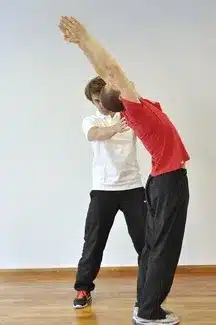Annual Movement Checkup

Every year, we make new resolutions and promises: lose weight, exercise more, finish those projects around the house, stop procrastinating, get the car inspected, floss more. Just as you get a yearly physical to get the inner workings of your body inspected (heart, lungs, cholesterol levels, etc), and a yearly dental checkup, you should also have a musculoskeletal system examination to make sure that your body is in working order. Especially if your resolutions include physical activity. (Note to self: call the dentist…)
Bodies break down, despite our best intentions, and often at the worst possible time in your life. Auto mechanics fix cars on both ends of the spectrum – from the most economical compact car all the way up to the sporty European racing car. But if we just let the car sit in the driveway and rarely move it, our proverbial bumper sticker should read: “My other body is a Maserati”. What can we do to keep these bodies of ours from breaking down? Simply put: prevention. But keep in mind: prevention is not fail-safe. We cannot keep you from sustaining an injury on the slopes or on the court, but we can work to significantly decrease the likelihood of you incurring one.
Your physical therapist is a highly trained medical professional – many with a Doctorate degree and advanced training – who is ready to assess your full body movement patterns. I hear many of my patients talk about their primary pain in association with other aches and pains, but lift up their complaint to the mystical and ethereal “I know it’s all connected” Great Mystery of Life. Yes, it is, because it’s all happening in YOUR body. But what does it mean for your body and your lifestyle?
Many injuries are due to movement dysfunction and muscle strength asymmetries. Small asymmetries (and, of course, large ones) may lead to joint, muscle, tendon or ligament breakdowns. We all have small dysfunctions with our movement patterns, but we are able to adequately compensate for them. Pain is a significant indicator that we are no longer able to compensate around these movement dysfunctions. Pain is your brain sending you a memo: something is wrong and you need to take this body to the shop to get it fixed. We’ll use the full body movement screen to reveal asymmetries and to explore how your segments work together – something we call Regional Interdependence.
Functional movement screening isn’t just for athletic populations – it is used to assess movement patterns in people from their teenage years into their twilight years. Functional movement encompasses everything from lifting groceries to playing a few rounds of weekend hoops. Further evaluation of individual muscles, joints and movement segments can reveal your weak points or movement dysfunctions. This could encompass joint stiffness, muscle tightness, overall mobility restrictions or poor coordination of all of the components.
After working with your physical therapist, you’ll walk out with 3 things: a better understanding of your own body’s dysfunctions, a plan to improve it, and a sense of direction for your new activity resolution. Let us develop a tailored program for you that fits into your schedule, addresses your issues and suits your personal needs – whether it’s improved posture, better balance, a stronger core so you can play with your kids, or more efficient athletic movement to improve your sport of choice.
So contact your Physical Therapist and come in for your yearly movement check up. Let’s get started!
